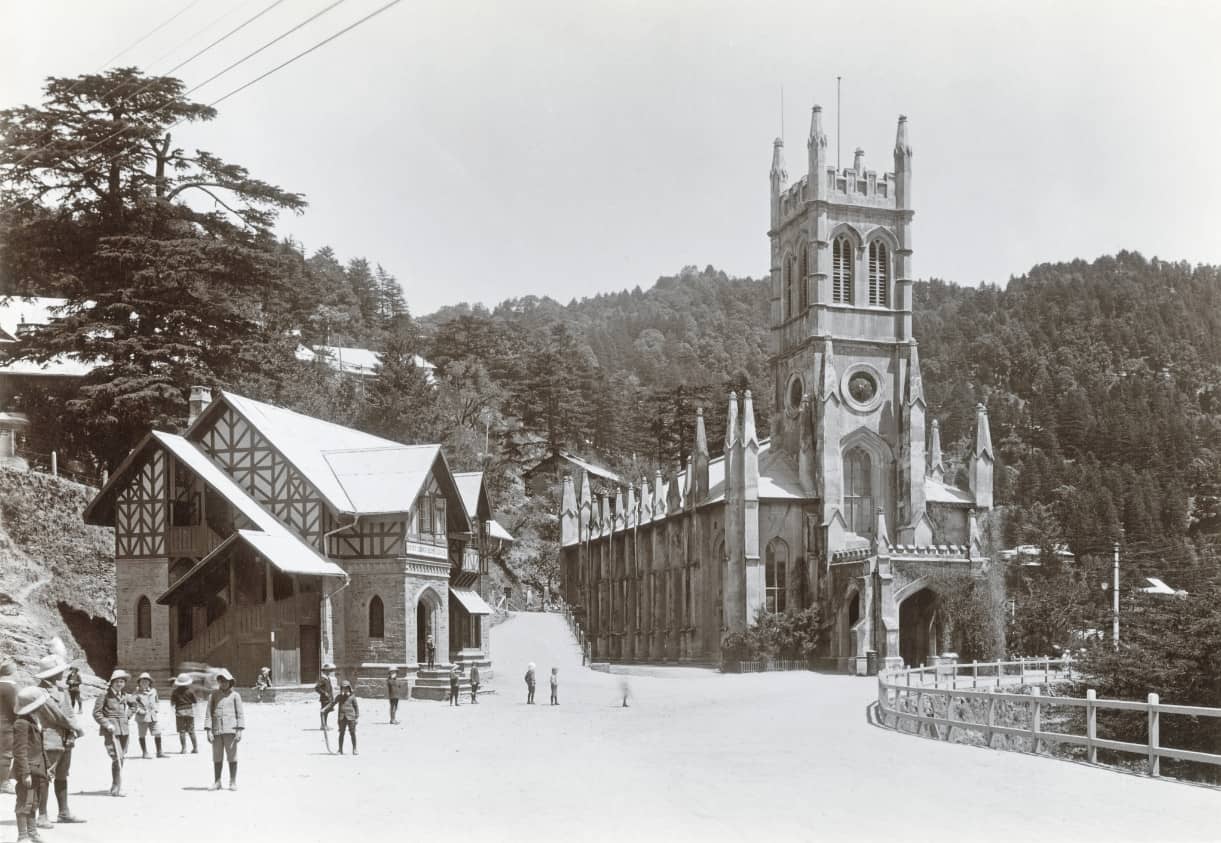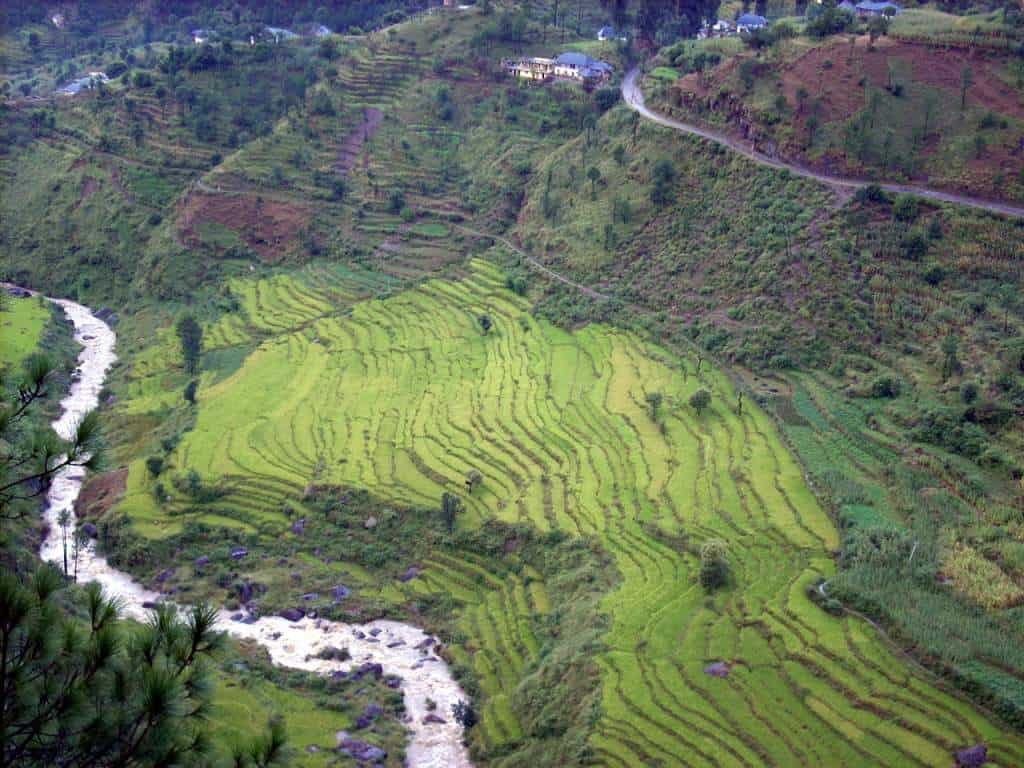Ambuja Cement Foundation
The Daseran watershed in the northern state of Himachal Pradesh has a steep terrain, where people grow crops on small patches of land and often on slopes. The annual rainfall is high and erratic, and farmers here face serious problems with fertile topsoil erosion, carrying significant ecological and economic impacts through the region. When crop production is impacted the ripples are felt across the community, with low profits for farmers constraining the entire community.
At a participatory needs assessment, community members were informed that global warming is impacting us in many ways. In group discussions on the effects of climate variability in the watershed area they shared the following:
- There has been a significant decrease in the cropped area over the last 25-30 years. A significant share of cultivable land has turned into waste or been put under fodder cultivation, degrading the soil.
- The snowline has shifted to very high areas, with a shorter period of snowfall
- The area under irrigation is less than it was 30 years ago, despite many new schemes
- Farmers are becoming discouraged, moving from agriculture to working in transport and allied businesses, or other jobs
- Biodiversity is decreasing, and the number of crops grown by farmers is decreasing. Many farmers are leaving tomato cultivation due to frequent infestations and disease.

It is evident that farmers in Daseran are feeling the impacts of climate change. Rural knowledge of the changes in many ways is quite advanced, owing to farming expertise and daily experience. The observed parameters include the movement of apple orchards to higher altitudes, the loss of various tree species, drying of traditional water sources, changing bird types and populations, falling crop yields, and increased crop vulnerability to planting delays and drought.
The Project
For these reasons, the Ambuja Cement Foundation initiated watershed development activities along with a climate-proofing initiative under the Integrated Watershed Development Model in the Solan district of Himachal Pradesh from 2017–22. The total area of the watershed was 925 hectares and the lives of 739 households were transformed.
The Ambuja Cement Foundation mobilises people to participate in their own development, with tried and tested processes that harness the buy-in of local residents. It has proven key to the success of watershed projects, and in Daseran, 16 village development committees were created together with 25 self-help groups among the 739 farming households. We implemented the project in two phases:
- Capacity building
Residents were trained to undertake watershed development through a ‘learning by doing’ approach. Awareness was created through village campaigns, gram sabhas, formal and informal meetings, participatory rural appraisal exercises, and by implementing watershed development activities – trenching, bunding, plantation forestry, horticultural crops and grassroots, water storage structures, and renovating terrace risers among others. Farmers contributed to the project financially with ‘shramdan’, donations, and volunteer labour.
- Full implementation
A variety of structures for soil and moisture conservation, water harvesting and agriculture improvement were built. We also promoted 25 Self Help Groups in the watershed area with support to initiate income generation activities. Village Watershed Development Committees were formed and equipped to undertake long-term development of the watershed area.
Measures executed
- 4,427 m3 of peripheral bunding
- 1,219 terrace risers renovated
- 8,223 m3 of trenching
- Draining line treatment for 490 structures
- 12 water harvesting structures
- Horticultural plantation x 30.6 hectares
- Forestry plantation x 20,975 hectares
- Grass seed and roots x 400 hectares
- 695 irrigation channels repaired
Intersectional impacts
Landless or smallholder farmers and women are the most vulnerable to climate variability as their livelihood depends on small holdings and livestock, which are worst impacted by global warming. The decline in water resources, connected to climate change, will have an adverse impact on irrigation. It is mostly women who are responsible for securing drinking water and rearing livestock, and they are worst affected when these sources are lost due to heavy floods and soil erosion.
The watershed projects in Daseran, Darlaghat have been transformative, with third-party studies confirming many positive effects. A social return on investment study valued the social return on the project at Rs 8.44 for every Re 1 invested. The primary impacts reported by internal and external studies were the following:
- Natural resources
98% of respondents confirmed an increase in the water discharged by a traditional stepwell, decreased erosion and increased grass yields, suggesting the groundwater table had risen. Data also showed an increase in fuel wood, non-timber forest products and canopy cover due to the increased vegetation.
- Agriculture and allied sectors
2.2 million litres of water storage capacity was created as a result of extensive work on water harvesting and storage facilities. Conservation measures increased the area’s irrigation potential, and the net area irrigated increased by 17.23 hectares, helping local farmers grow more crops. Cultivable wasteland shrank by a third, and the area under cultivation grew from 2.31km2 in 2010 to 4.33km2 in 2017 – an 87% jump. It also impacted cropping intensity across the region, with changes in both the middle and valley regions of the watershed. There was an appreciable increase in the number of farm animals during the project, and 93% of farmers reported having bought a better breed of cow resulting in higher milk yields.
- Social aspects
A third-party evaluation study found that 80% of watershed area respondents reported an income increase. Dairy milk production, an important source of income generation, grew 200% from 924 to 2,826 litres, with women, in particular, reaping the benefits of this sector. Infrastructure facilities in the area improved, with an increase in drinking water facilities, with all farmers reporting that infrastructure had improved, and 46% of respondents said they had made investments in their houses. There was a 20% increase in access to institutional credit. And sanitation improved, with a 22.2% increase in households with toilets.
Scalability
Based on the project outcome the National Bank for Agriculture and Rural Development has sanctioned many additional watershed projects in Himachal Pradesh. The Ambuja Cement Foundation is implementing 11 such projects in three districts of the state using what we learnt in Daseran. Community capacity has increased to adapt to climate change with their livelihoods unaffected. The Ambuja Cement Foundation focuses on mobilizing people into groups and has harnessed the power of building Local Watershed Committees, as people’s institutions such as these play a major role in taking ownership of community projects and resolving local issues. The watershed project will be scaled by raising resources from various funders and mobilising the local community to build capacity. After the success of the Daseran watershed project, the government of Himachal Pradesh has asked Ambuja Cement Foundation and NABARD to implement more watershed projects in the region.
Download Daseran Watershed Project Social Return on Investment (SROI) – Impact Report



















